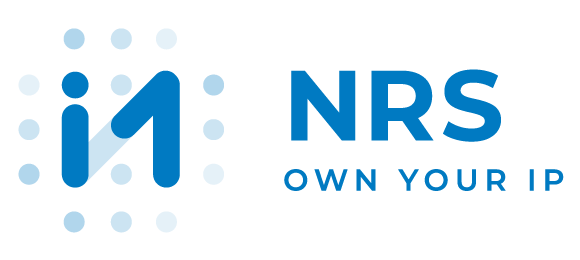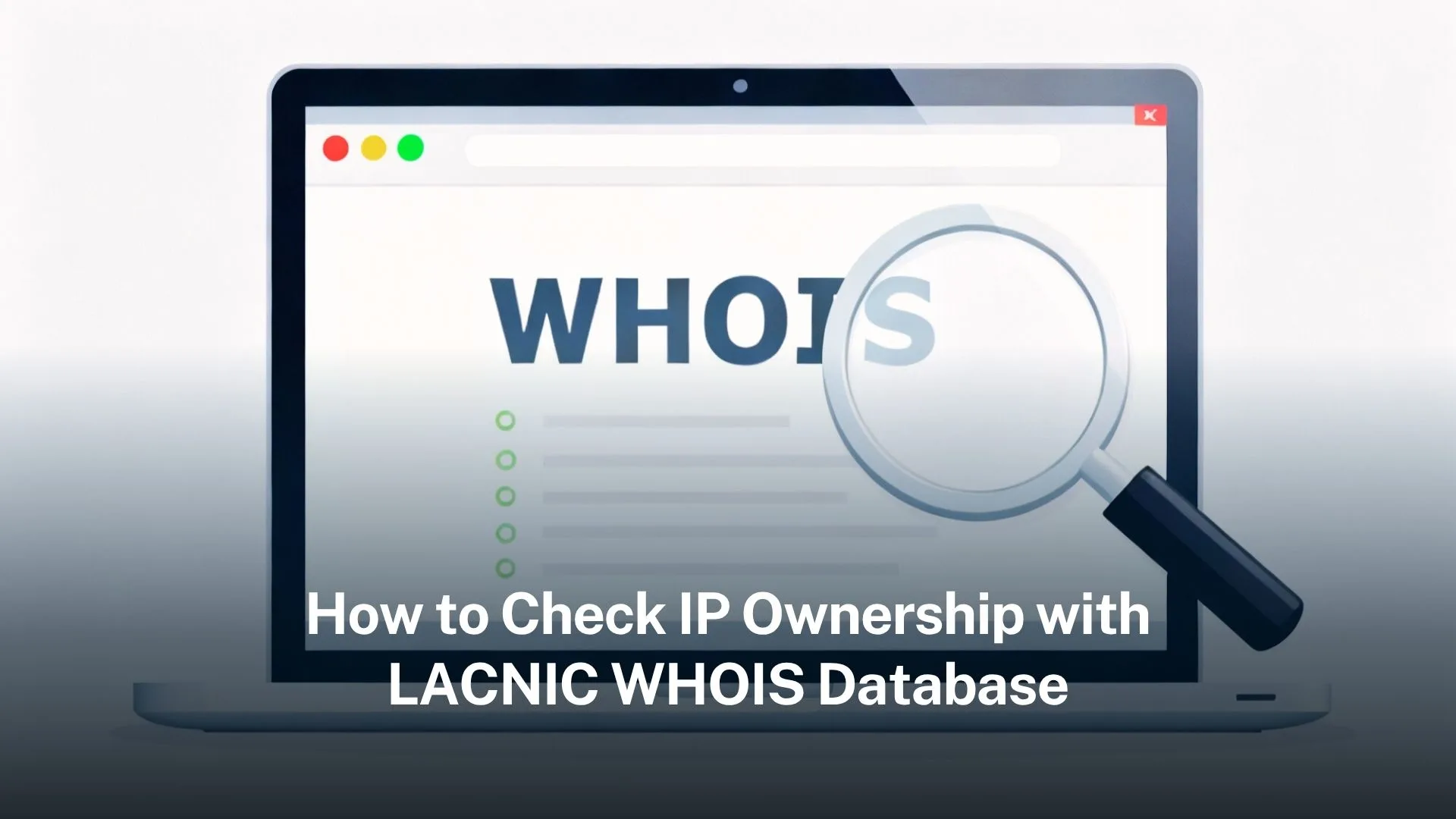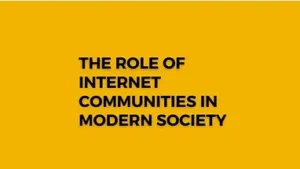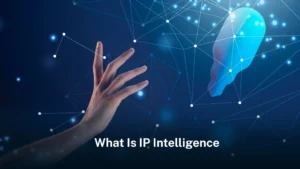As Latin America and the Caribbean deepen their digital transformation, identifying who controls IP addresses has become more essential for cybersecurity, compliance, and governance. The LACNIC WHOIS database offers a transparent way to trace IP ownership and strengthen digital trust.
• The LACNIC WHOIS database provides authoritative records of IP ownership in Latin America and the Caribbean, supporting security, compliance, and internet governance.
• From cybercrime investigations to corporate network security, IP ownership checks are a practical necessity for organisations across the digital economy.
The Growing Need for IP Transparency
Today, the internet connects everyone. It is very important to know who controls online resources. Companies are doing more business online. Governments are making more rules. The complexity of cyberattacks is increasing. Therefore, one of the most important aspects of digital trust nowadays is determining who owns an Internet Protocol (IP) address. This practice is important in many fields like finance, telecom, and healthcare. Verifying IP ownership is no longer solely a technical undertaking. It is now essential for following rules, ensuring security, and good digital management.
Globally, this need is evident. Clear information regarding IP addresses is necessary for governments, businesses, and researchers. They rely on regional internet registries for this. In Latin America and the Caribbean, the main registry is called LACNIC. LACNIC runs a WHOIS database. This database is a public tool. It helps people find out who holds specific IP resources. This information helps make networks more secure. It helps enforce accountability. It also makes it easier for different countries to work together online.
Understanding LACNIC and the WHOIS Database
To check IP ownership in this region, you must first know about LACNIC. LACNIC started in 2002. Its main office is in Montevideo, Uruguay. It is one of five global registries that manage IP address blocks. It serves over 33 economies in the region, from large countries like Brazil to small island nations.
The WHOIS database is a public directory run by LACNIC. Anyone can use it to look up details about an IP address or a network number. Other commercial lookup services exist. But the LACNIC WHOIS is the official source. The information comes directly from the registry itself. When you type an IP address into the database, you get details. These details include the name of the organisation that owns the IP block. You can also find contact information for that organisation.
The WHOIS system was first made for technical coordination. Now, many different groups use it for transparency. Police, network operators, researchers, and businesses all use it. They use it to create accountability online. The internet in Latin America and the Caribbean is growing fast. Cross-border connections are very important. So, the LACNIC WHOIS database is a central part of digital governance for the region.
Why IP Ownership Matters
Knowing who owns an IP address is important for many reasons. It connects to major issues on the internet today.For cybersecurity, identifying an IP owner is a key step.“As a Regional Internet Registry, LACNIC maintains a database known as WHOIS, which is the first-choice tool when analysing security incidents.” It helps in detecting threats and responding to attacks. If a bad actor launches an attack, finding the IP block’s owner is the first step. This step allows for mitigation and communication with the correct network. Without this transparency, attackers would have more freedom to operate.
Following rules is also very important. Industries like banking and healthcare must know where their data goes. They need to ensure their digital systems are properly mapped. Knowing an IP’s owner can help with data sovereignty laws. It can also help when showing auditors that rules are being followed.Network operators need this information too. It helps them fix routing problems, stop spam, and prevent IP hijacking. IP hijacking is when someone falsely claims control over IP addresses. LACNIC WHOIS records are the official reference in these situations.
On a larger scale, internet governance needs transparency. Registries like LACNIC help build trust between different groups. This registry model stops any single government or company from controlling all IP resources. Instead, regional management allows allocations to match local needs and growth. In short, IP ownership data supports the trust that the internet is built on. Without it, there would be less accountability, more problems with compliance, and less reliable operations.
How to Use the LACNIC WHOIS Database
Using the LACNIC WHOIS database to check an IP owner is simple. But understanding the results takes a little practice. You start by going to the LACNIC website or using a command-line tool. You type the IP address into the search field. This sends a query to LACNIC’s registry records. The system then returns the information it has. A typical result shows a few key things. It shows the name of the organisation that holds the IP block. This could be an internet provider, a company, or a school. It also shows contact information. This includes people you can talk to for administrative or technical issues. The result might also include details about the network number and routing information. Sometimes there are notes about why the IP block was given out.
Remember that LACNIC only has data for IPs in its own region. If you check an IP from Europe or Asia, the query will send you to the correct registry for that area. This system lets each region manage its own resources while working together globally. LACNIC also offers tools for bulk queries and APIs. These allow companies to automate the lookup process. This is very useful for security companies and large internet providers. They need to check thousands of IP addresses every day.
Practical Scenarios and Use Cases
The LACNIC WHOIS database is useful in many real-life situations. Police use it during cybercrime investigations. They can trace a suspicious IP address back to its registered owner. This does not find the individual user, but it finds the organisation responsible. This information is often needed for legal actions or international help.
Companies use it for their own cybersecurity. They can check if unexpected internet traffic is coming from a legitimate network. If an unknown IP appears in their logs, they can look up its owner. This tells them if the traffic is safe or possibly an attack. Internet service providers use WHOIS every day. It helps them resolve problems like spam complaints or phishing attempts. It is a first step in stopping DDoS attacks.
Researchers and policy experts use the database too. They study regional internet trends. They look at digital inequality or how network resources are shared. The data shows who holds which IP blocks. This provides valuable evidence for understanding how the internet is growing in Latin America and the Caribbean.
Challenges and Limitations
The LACNIC WHOIS system is very important, but it has some problems. The first problem is accuracy. LACNIC requires members to keep their information current. But not all organisations do this quickly. This means some contact details are old or ownership information is wrong. This makes the system less reliable.
Privacy is another big issue. There is a global debate about transparency versus data protection. Laws like the GDPR in Europe limit the sharing of personal data. Registries now have to balance transparency with people’s right to privacy. This can mean less information is available to the public.
There are technical challenges too. For people who are not experts, the WHOIS records can be hard to understand. They contain many technical terms and acronyms. Also, using APIs for automated lookups can cause performance issues if not done correctly. Finally, there are regional differences. Large companies usually keep their records accurate. But smaller operators in remote areas might not have the resources to update their data. This inconsistency affects how well WHOIS works as a trust tool for everyone. LACNIC stated, “Public WHOIS records must strike a balance between transparency and privacy regulations such as GDPR.”
Industry Impact and Regional Significance
The LACNIC WHOIS database affects the whole digital environment in Latin America and the Caribbean. For governments, it helps with public policy goals. These goals include digital inclusion and building strong infrastructure. Transparent IP ownership helps governments work with private companies to solve regional problems.
For businesses, WHOIS builds trust in deals across borders. As more companies in the region offer digital services, confirming who they are dealing with is vital. From a development view, LACNIC’s management of IP resources is crucial. It makes sure that addresses are given out based on local needs. This is better than having outside powers decide. This decentralized model gives the region more control in the digital age. By improving accountability and cooperation, LACNIC WHOIS helps the internet in the region stay stable and grow. This is very important as digital economies continue to expand.
Future Outlook: Towards Smarter, Safer IP Transparency
The role of LACNIC WHOIS will change in the future. Technology and regulations are always shifting. One change will be more automation and artificial intelligence. Companies will build WHOIS checks directly into their security systems. This will let them find IP owners instantly during an incident. AI could also help find strange patterns in IP allocations. This could help stop major threats before they happen.
Privacy frameworks will also get better. The debate over data protection will continue. Registries will probably create new systems. These systems will balance transparency with controlled access. They will make sure that legitimate users, like law enforcement, can still find owners. But they will not expose personal data to everyone.
Finally, the Internet of Things and new IPv6 addresses will create more devices online. Accurate registries will be essential for securing these large networks. They will ensure accountability on a huge scale. Digital change is speeding up in Latin America and the Caribbean. LACNIC WHOIS will continue to be a foundation of internet governance there. It combines technical management with transparency and accountability. It is ready to help shape the digital future of the region.
FAQ
1. What is LACNIC?
LACNIC (Latin American and Caribbean Internet Address Registry) is one of the five Regional Internet Registries (RIRs) responsible for managing IP addresses and Autonomous System Numbers in Latin America and the Caribbean.
2. What is the LACNIC WHOIS database used for?
The WHOIS database allows anyone to check ownership details of IP addresses and ASNs registered within LACNIC’s region. It supports transparency, cybersecurity, compliance, and internet governance.
3. Is WHOIS information always accurate?
Not always. While LACNIC requires members to update their records, some entries may become outdated or incomplete. Larger organisations typically maintain more accurate data than smaller operators.
4. Can WHOIS identify individual internet users?
No. WHOIS shows which organisation or service provider owns an IP block, but it does not reveal the identities of individual end-users.
5. How does LACNIC WHOIS differ from other RIR WHOIS services?
Each RIR manages IP resources for its own region. LACNIC covers Latin America and the Caribbean, while others like RIPE NCC (Europe) or ARIN (North America) manage their respective regions.
6. Are there privacy concerns with WHOIS data?
Yes. Public WHOIS records must balance transparency with privacy regulations such as GDPR. As a result, some personal contact details may be restricted or hidden.
7. Can businesses automate LACNIC WHOIS queries?
Yes. LACNIC provides bulk query and API options, enabling organisations to integrate ownership checks into security monitoring and network management workflows.





Your 💪 work has genuinely made such a positive difference in my entire life
This guide on using LACNIC’s WHOIS database is super practical—finally got clear steps to check IP ownership for my team’s cybersecurity checks!
It’s helpful that it breaks down use cases like spam resolution too, since we’ve struggled with outdated records before. Definitely bookmarking this to reference next time we need to verify regional IPs!